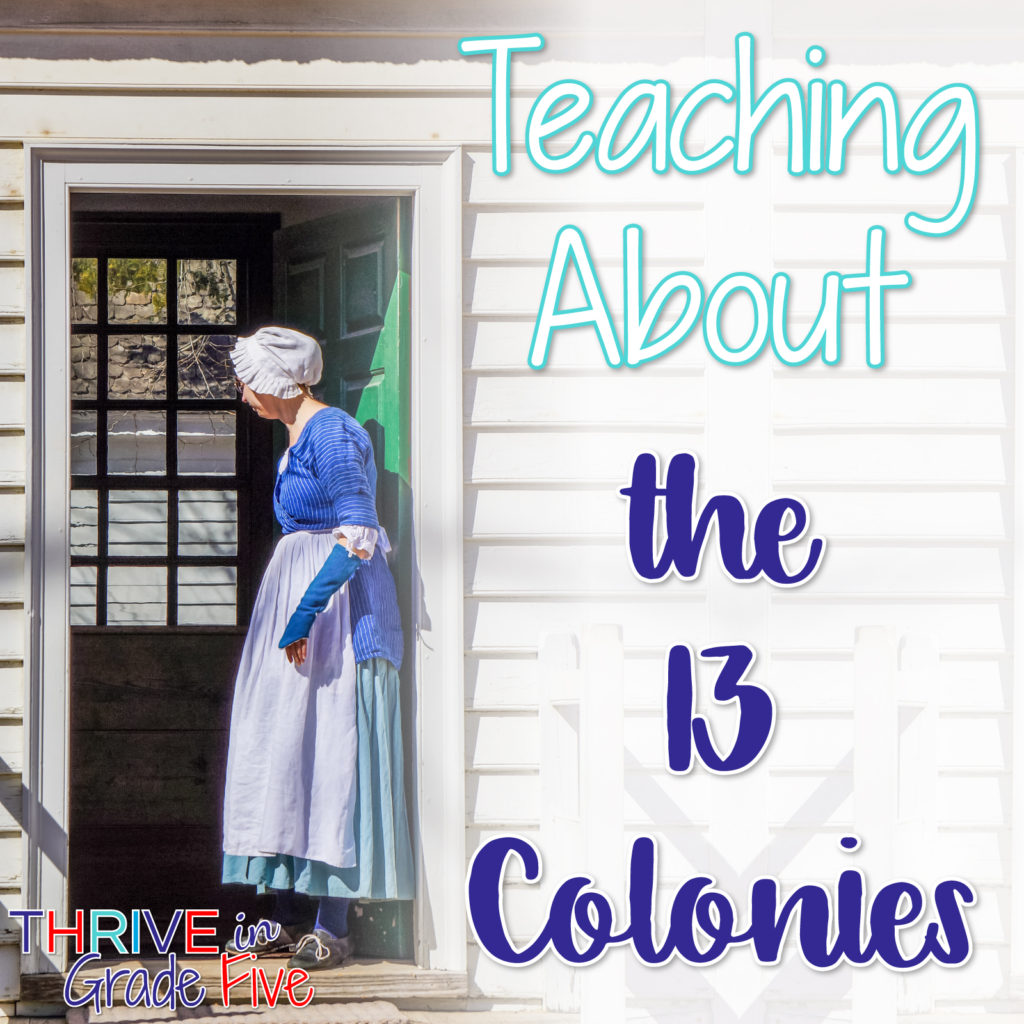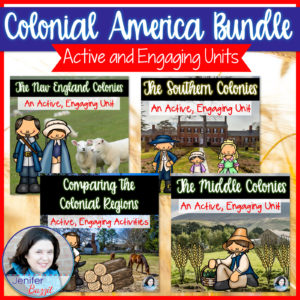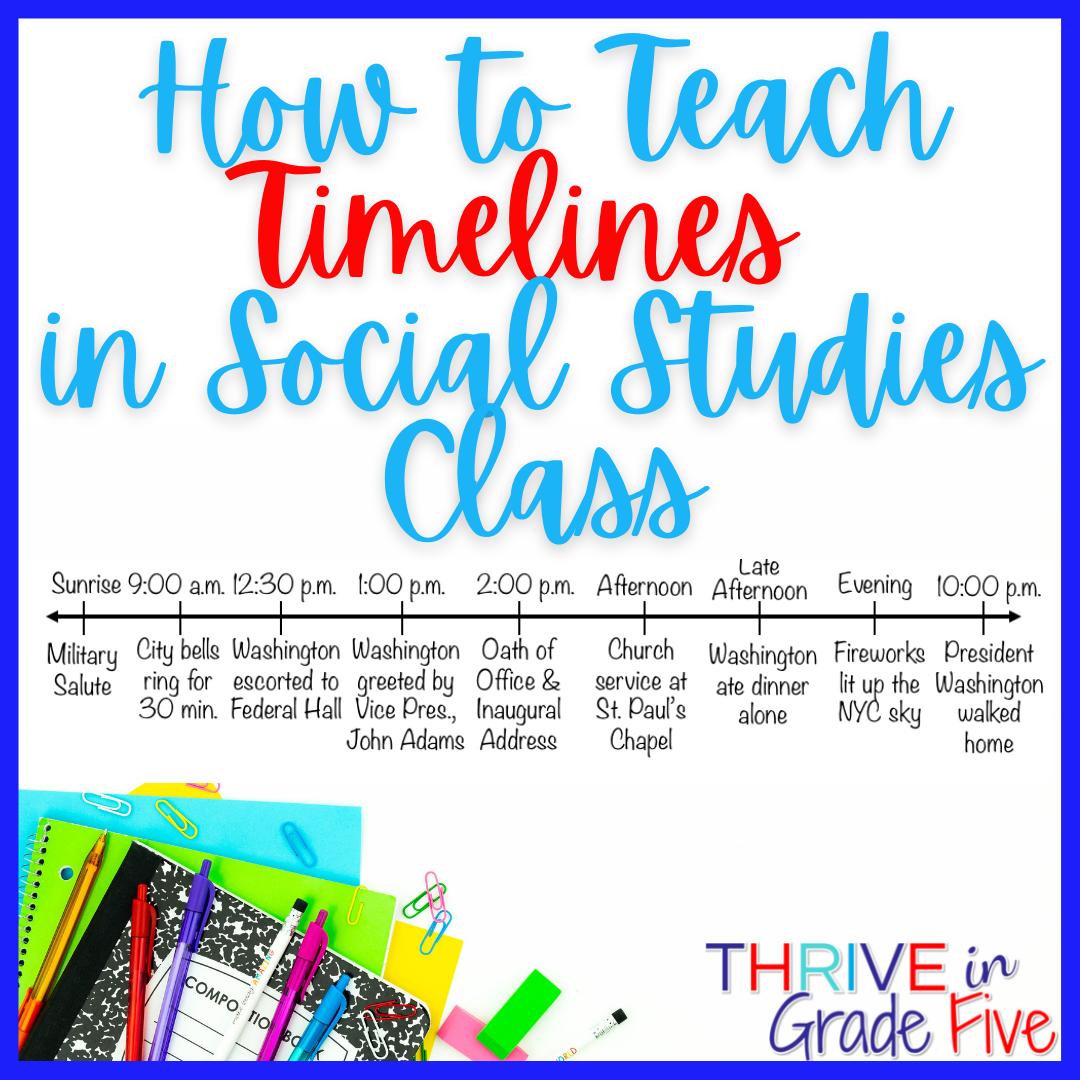Teaching the 13 Colonies, or Colonial America, is a highlight of my school year.
I teach Colonial America in three units: New England Colonies, Middle Colonies, and Southern Colonies. We also spend a little time comparing the colonial regions once we’ve learned about all three.
In this blog post, I’d like to share how I teach the colonial regions and give you some ideas for making your lessons fun.
I think it’s important to give students an overview of each region before diving in and learning the details. I created overview passages and layer books for each of the colonial regions. I’d love to share them with you. Just enter your first name and email address. You’ll become part of my VIP email list too. No spam… Just great ideas and resources 🙂
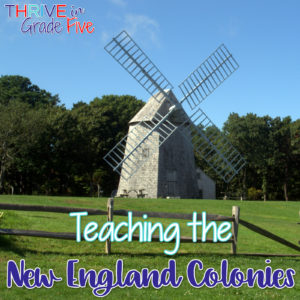
Teaching the New England Colonies
When I think of the New England Colonies, I picture those old fashioned paintings of people walking to church on Sundays wearing bonnets and hats and trudging through the snow.
In the New England Colonies, small towns were the norm and the church was the center of life.
This region was founded by people longing for religious freedom, so God and the church were a cornerstone of life in the New England Colonies.
New England Colonies Facts & Basic Information
Colonies included in this region: Massachusetts, Connecticut, Rhode Island, and New Hampshire
Economic Activities: Shipbuilding, Fishing, Lumber, Animal Furs, Whale Oil
Geography & Climate: Thin, rocky soil; Cooler climate
Agriculture & Cash Crops: New England farmers were able to grow crops to help sustain their families and neighbors. However, their soil was not conducive to large amounts of crop growth, so agriculture was not a big money-maker in this region.
Ideas for Teaching the New England Colonies
Sketch a fictional New England town!
We know that the church was the center of life in New England but another important aspect of town life was the town common, a grassy area where animals could graze and artisans could sell their wares.
Homes were built circling the town common. Wealthier families lived closer to the common and less well-to-do families lived further from the common.
I have my students create a sketch of a fictional New England town, including the church, town common, meeting house, artisans’ shops, and homes.
Town Meeting Simulation
During town meetings, all of the property-owning male residents of the town voted. This type of decision-making was unique because qualified residents were voting directly, as opposed to electing representatives to vote for them. Indentured servants, enslaved people, and women could be present but were not allowed to vote.
Hold a town meeting simulation in your classroom. What concerns might a large landowner have that a small farmer might not agree with and vice versa?
*Just a note: Please use sensitivity and best judgement when doing this simulation.*
Beliefs of the Puritans
Ask students to research the beliefs of Puritans and make a top five list or write a couple paragraphs to explain what they learned. Puritans were a major influence in the New England Colonies. I want my students to recognize the hypocrisy of Puritans imposing their beliefs on others and denying religious freedom while demanding religious freedom for themselves.
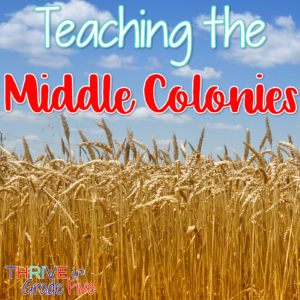
Teaching the Middle Colonies
When I think of the Middle Colonies, I envision rippling wheat fields, peaceful Quakers, and an active grain trade.
This colonial region earned the nickname Breadbasket Colonies thanks to the fertile soil and long growing season that allowed them to grow a variety of crops used to make bread.
Religious freedom was available for all in the Middle Colonies. The region was dominated by Quakers, who believed that every human, despite gender, race, or income level, deserved to be treated equally.
Middle Colonies Facts & Basic Information
Colonies included in this region: New York, Pennsylvania, New Jersey, and Delaware
Economic Activities: The economy of the Middle Colonies was based on agriculture. However, some colonists in this region, especially in larger cities, worked in iron factories where they produced kettles, plows, tools, and nails.
Geography & Climate: Rich, fertile soil; Long growing season
Agriculture & Cash Crops: Crops that were essential to baking bread were the major cash crops grown in this region, including wheat, rye, and corn. There were also vegetables, fruits, and livestock that were grown/raised in the Middle Colonies and exported for sale.
Ideas for Teaching the Middle Colonies
All About Ben Franklin
You can’t study the Middle Colonies, especially Pennsylvania, without talking about Ben Franklin. Philadelphia was his beloved city and he did so much to improve life there.
Franklin is credited with some well-known inventions, like the lightning rod, Franklin stove, and etc. He also did important things, like founding the first public library, serving as postmaster, and etc.
If students take a little time to research Ben Franklin, they will find out that some of his lesser-known inventions and actions are actually quite fascinating.
Quakers vs. Puritans
Quakers are still active and practicing their religious beliefs today. Students may have heard them referred to as the “Society of Friends.” I encouarge my students to learn a little more about this group and compare them to the strict, less-than-tolerant Puritans of the New England Colonies.
Apprenticeship Job Postings
I introduce the concept of apprenticeship in my Middle Colonies unit. Of course, there were apprentices in each of the colonial regions but I find that this unit is a great place to talk about the on-the-job training that many colonial children and young adults experienced. I ask my students to research several types of apprenticeships and then create a job posting that describes the characteristics needed for an apprentice in one of the trades.
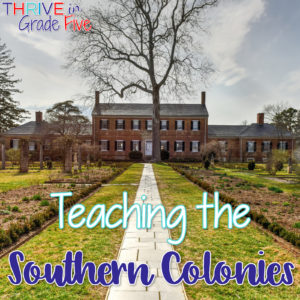
Teaching the Southern Colonies
I could seriously spend weeks and weeks in the Southern Colonies. I try very hard to control myself and not let the Southern Colonies unit go on too long. During a typical school year, I spend 2-3 weeks in the Southern Colonies. There’s just so much to cover and every single bit of it is fascinating!
The Southern Colonies were the powerhouse of the colonial economy. Thanks to the excellent soil and long growing season, they grew massive amounts of cash crops, like tobacco and cotton, on small farms and large plantations.
All five of the Southern Colonies have interesting founding stories but Georgia’s is always my students’ favorite. James Oglethorpe founded George in 1732 for two reasons. First, he wanted to empty the debtors’ jails in England and send the people who owed money to Georgia to pay off their debts through hard work. Second, he wanted the colony to be a buffer zone between the “evil” Spanish to the south in Florida and the “good Christians” to the north in the Carolinas.
Religious toleration was common among southern colonists. There were towns and cities but for the most part, the Southern Colonies were rural. Large farms and plantations made it to where there might not be a close neighbor. This region wasn’t like the New England Colonies where life revolved around church and the entire town knew everyone’s business.
Along with the fascinating aspects of the Southern Colonies, we have the difficult topics. The Southern Colonies depended heavily upon the enslaved workforce. We see the ripples of this sad truth starting in Colonial America and continuing through the Civil War.
Teaching about slavery, even in upper elementary, is essential but that doesn’t mean it’s easy to teach. I recommend the following two blog posts to help you dive deeper into best practices for teaching slavery with sensitivity and respect:
How to Teach 18th Century Slavery in Today’s Classroom
Teaching Slavery in Upper Elementary: An Interview with Scholar Richard Josey
Southern Colonies Facts & Basic Information
Colonies included in this region: Maryland, Virginia, North Carolina, South Carolina, and Georgia
Economic Activities: Agricultural products, including cash crops of tobacco, rice, indigo, corn, cotton; Livestock; Barrels and other shipping products
Geography & Climate: Rich, fertile soil; Long growing season
Ideas for Teaching the Southern Colonies
Colonial Money: Pounds, Shillings, and Pence
During or after our study of the Southern Colonies, I introduce colonial money. There were multiple forms and types of currency, but I’ve noticed that most historical documents from the time period use pounds, shillings, and pence. I created an entire blog post on teaching colonial money, so I’d encourage you to check it out. Also, there’s a free resource at the end that my students LOVE!
Teaching About 18th Century Colonial Money
George Washington’s Mount Vernon
Mount Vernon is an outstanding resource for teachers. Once I introduce my students to their amazing website, I often find them sneaking back to look at it over and over. I recommend you start by taking students on Mount Vernon’s virtual tour. It’s great to use on students’ laptops or to project onto your technology board and tour as a class.
Colonial Williamsburg Resource Library
Our amazing Colonial Williamsburg friends created a free resource library for teachers. There are kid-friendly videos, activities, and lessons for teachers on this site. You do have to create a free account but I promise, it’s worth the minute of your time.
I have some favorite videos that I show my students every year from this resource library. They used to charge a lot of money for these videos but now they are all free. Teacher win!
I recommend you check out the Colonial Idol video. It’s set up like American Idol, but ya know, colonial-style. I love these performers and students learn so much from hearing their stories!
Colonial Williamsburg Resource Library
Colonial Williamsburg Online Games
There are a plethora of games on this site that teach about life in Colonial America and students loooove playing them. I usually give my students a few game suggestions and then let them have some time to explore the games and activities on their own. Trust me, they’ll be going back again and again.
Colonial Williamsburg Kids’ Games and Activities
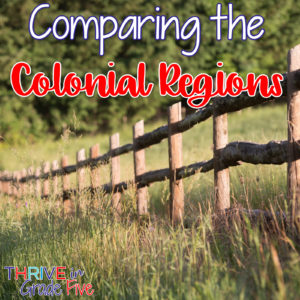
Comparing the Colonial Regions
After learning about all three colonial regions, I think it’s important to spend a little time comparing and contrasting the regions.
Looking at the regions’ similarities and differences helps students to make connections and realize that the regions were actually quite unique. For example, while the Southern Colonies were all about making money, the New England Colonies were mainly concerned with religious freedom.
If you’re looking for a ready-to-use Colonial America Unit Bundle, you will love this one:
In my classroom, I use the following layer books to introduce each colonial region. I would love to send them to your inbox for free. Just enter your first name and email address below. You’ll also become part of my weekly VIP email club just for upper elementary teachers. 🙂
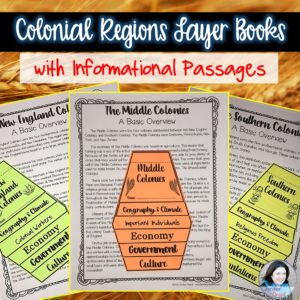
Sooo, what do I teach next? After teaching the 13 Colonies, we move on to the Road to Revolution and later the American Revolution. This blog post will be super helpful to you:
Teaching the American Revolution in Upper Elementary
If you’d like to see a layout of how I teach 5th grade social studies, click here: How I Teach 5th Grade Social Studies


